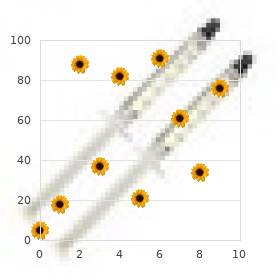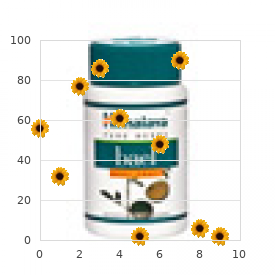"Buy fosamax 70mg on line, women's health uk forum".
By: D. Mitch, M.B.A., M.B.B.S., M.H.S.
Professor, Mayo Clinic College of Medicine
With movement of the ipsilateral arm breast cancer young women generic fosamax 35mg visa, blood is shunted from the vertebrobasilar system to the arm musculature pregnancy 7 weeks cheap fosamax american express, resulting in cerebral hypoperfusion menopause gaining weight order fosamax 70mg line. Convulsive-like movements or myoclonic activity occurs in 28% to 90% of patients with neurally mediated syncope breast cancer tee shirts 70 mg fosamax with mastercard. Unconsciousness lasting more than 5 minutes, unusual posturing, tonicclonic limb movements, a bite on the lateral aspect of the tongue, and a slow return to full alertness or prolonged confusion after the event are suggestive of a seizure. A meta-analysis reported a specificity of 96% and a sensitivity of 33% for lateral tongue biting in differentiating between seizures and syncope. It is unlikely that hypoglycemia causing transient loss of consciousness will resolve without intervention. Differential Diagnosis One of the first steps in approaching the patient with syncope is to distinguish it from other causes of transient loss of consciousness (eg, vertebrobasilar transient ischemic attack, seizure, or metabolic disorder). Any disease process accompanied by hypovolemia, shock, or autonomic dysfunction can have orthostatic symptoms and result in syncope. Table 3 presents conditions that may mimic syncope but are not due to transient global cerebral hypoperfusion. Toxins A variety of agents can cause transient loss of consciousness by central nervous system and respiratory depression. Agents with a short onset of action and short half-life may mimic syncope, though most toxins will cause prolonged loss of consciousness. A few stroke syndromes (such as brain stem ischemia) can have brief episodes of transient loss of consciousness as a symptom of decreased blood flow to the reticular activating system. The episodes are typically associated with other neurologic symptoms of posterior circulation ischemia. The assumed mechanism of subarachnoid hemorrhage resulting in syncope is decreased brain perfusion caused by a temporary rise in intracranial pressure. Presentations can range from fully conscious actions for secondary gain to dissociative states where the patient has no conscious control over the activity. Hyperventilation associated with panic disorder can cause syncope by hypocarbia and subsequent cerebral vasoconstriction. A prospective cohort study found that 20% of patients with syncope met the diagnostic criteria for at least 1 major psychiatric or drug/alcohol disorder, and 20% of patients were twice as likely to have recurrent syncope and have more prodromal symptoms. In true syncope, the patient will, typically, have regained consciousness before the ambulance arrives. Assessment for life-threatening causes of syncope is the first priority for the prehospital provider. Intravenous access should be obtained if the patient is hypotensive or symptomatic. Emergency Department Evaluation the approach to the patient with syncope has 3 steps: (1) identify life-threatening conditions; (2) perform a systematic evaluation to determine the etiology of the syncope; and (3) perform risk stratification for possible adverse (cardiac) outcomes when the etiology is unclear. Start with a broad differential that includes all causes of transient loss of consciousness before assuming that the patient has experienced true syncope. If possible, interview witnesses for important details occurring just prior to or during the event, since the patient might not have an accurate recollection of the event. See Table 5 (page 7) for a list of symptoms that may suggest a life-threatening cause. If no life-threatening cause is suspected, make a judgment as to whether the event was truly syncope. Perform a careful history and determine whether there was a brief loss of consciousness and loss of postural tone. If a patient has not spontaneously recovered to his baseline level, the episode was not a true syncope. In patients with true syncope, attempt to discover if it was cardiovascular-mediated, neurally mediated, orthostatic hypotension-mediated, or due to some other cause. Inquire whether symptoms such as dizziness/ near-syncope were present after standing up from a sitting or a supine position. The most common prodromal symptoms of neurally mediated syncope are pallor, dizziness, and diaphoresis.


Depending on etiology womens health center buy fosamax 70mg fast delivery, may need diuresis (Lasix) menstruation 3 weeks cycle order fosamax 35mg mastercard, inotropes and pressors (dopamine women's health problems doctors still miss discount fosamax american express, dobutamine pregnancy 6 weeks 5 days purchase fosamax 70 mg otc, epinephrine, milrinone), vasodilators (nitroprusside, nitroglycerin, phentolamine). Prostaglandin E1 for young infants with ductal-dependent lesions (hypoplastic left heart, interrupted aortic arch, severe tetralogy of fallot or coarctation of aorta, critical pulmonary stenosis). Non-specific signs in younger children: fever, respiratory distress, poor feeding, cyanosis. Older children with fever, fatigue, myalgias, chest pain, dyspnea on exertion, palpitations. Look for tachycardia out of proportion to fever or dehydration, or tachycardia that does not improve when fever and dehydration are adequately treated. Chest pain (worse while supine or with inspiration; better sitting up, leaning forward) and tachypnea. Organisms: Strep viridans (in congenital heart disease or with devices), Staph aureus (in structurally normal heart). Apnea: defined as cessation of breathing for > 20 seconds or for < 20 seconds but associated with bradycardia, pallor, or cyanosis. Incidence has decreased with counseling families to place infants in supine position for sleep. Term used to describe infants who cry in excess for no apparent reason in first three months of life. Onset has clear beginning and end with sudden development and often occurs in evening hours. Pain hair tourniquet, corneal abrasion, incarcerated hernia, testicular torsion, intussusception. Stomach contents reflux into the esophagus due to decrease of pressure in the lower esophagus, increase in abdominal pressure, or both. Regurgitation of the acidic stomach contents is responsible for the following problems: a. Aspiration with chronic cough or night cough, tracheobronchitis, pneumonia, wheezing, apnea. Esophagitis with altered motility, chest pain, fussiness, colic, vomiting or regurgitation. In a growing, hydrated, well-appearing child, diagnosis is clinical and additional studies are rarely needed. Increase frequency of feedings in decreased amounts; H2 inhibitors recommended if severe and accompanied by weight loss. Surgery may be needed for refractory cases and those who are having serious complications like aspiration (Nissen fundoplication). Hematemesis, coffee-ground emesis, hematochezia, and melena carry the same significance. In the well-appearing child, confirm that the red or black stool is actually discolored from blood. Bleeding disorder: hemorrhagic disease of the newborn, vitamin K deficiency, liver failure, thrombocytopenia, hypersplenism, etc. History of painful defecation with straining, grunting, or back arching resulting in streaks of bright red blood on stools. The blood pressure and mental status may remain normal until the patient abruptly decompensates. Skin color, pulse rate, and urine output are better indicators of volume status and hemodynamic stability. Laboratory testing and imaging is rarely needed; but in dehydrated or ill-appearing children, consider: 1. Fever, abdominal pain, and watery diarrhea that becomes bloody are historical clues. Isonatremic: water and NaCl lost in physiologic proportion, thus serum Na is normal. Hypertonic: 1st 24 hrs Ѕ deficit + maintenance; 2nd 24 hrs Ѕ deficit + maintenance. Give 5-10 ml of oral rehydration solution: Pedialyte or Rehydralyte by spoon, syringe or cup q 5-10 minutes and gradually increase the amount. Foods high in starch for older children - rice, crackers, toast, noodles, baked potatoes; also vegetables, yogurt, fruit. Systemic vasculitis with immune complex deposition with majority of cases occurring at 4-6 years of age.

Ashy dermatosis and lichen planus pigmentosus: a clinicopathologic study of 31 cases women's health tipsy basil lemonade order fosamax australia. T-cell rather than B-cell malignancies involving the skin may exhibit folliculotropism menstrual headache relief discount fosamax online mastercard, and the cellular morphology does not point to a lymphoproliferative malignancy pregnancy flu shot order fosamax with a visa. Although Langerhans cell histiocytosis may involve the scalp and is epidermotropic womens health boise order fosamax 70mg without a prescription, the clinical presentation with an isolated 2-mm papule, cellular morphology and folliculotropism are inconsistent with this diagnosis. The scalp is a common location of metastatic carcinoma, and there are areas of pseudoglandular formation in this tumor. Metastatic adenocarcinoma is rarely epidermotropic and is not known to exhibit folliculotropism. The dermal mass of densely packed tumor cells, with pigment, oriented about a follicle and with involvement of follicular epithelium, is most consistent with metastatic melanoma. Mycosis fungoides may be folliculotropic, including with follicular mucinosis, but the cellular morphology in this lesion is not that of lymphocytes. Discussion Primary cutaneous melanoma with folliculotropism has been reported in fewer than 10 cases. Folliculotropic metastatic melanoma is even more unusual and was first described in 2009, in a 70-year-old man who had a primary cutaneous melanoma of the abdomen and 2 cutaneous metastases; all 3 lesions had a folliculocentric pattern and a high mitotic index. Folliculotropic metastatic melanoma has been reported in two additional cases: one patient had multiple 1-2 mm black macules of the scalp (Davis et al) and another had widely distributed 1-2 mm cutaneous metastases, including 9 of 20 in a follicular distribution (Ishida and Okabe). Follicular malignant melanoma: a case report of a metastatic variant and review of the literature. The classic morphology of Langerhans cells (large oval cells with increased pale pink cytoplasm and folded bland nuclei) is not evident. The tumor cells do not exhibit the characteristic granular cytoplasm, and pseudoepitheliomatous hyperplasia in the overlying epidermis (a common feature of granular cell tumors) is not present. The tumor cells are cells exhibit a bi-phasic appearance with centrally located epithelioid cells flanked by a more banal population of nevoid appearing melanocytes. The lesion consists of melanocytes exhibit a bi-phasic appearance with centrally located epithelioid cells with a Spitzoid cytology flanked by a more banal population of nevoid appearing melanocytes. The pattern of growth (the melanocytes appear mostly well spaced), the uniform cytologic atypia of epithelioid cells, and the lack of other atypical features (dermal mitotic figures) argue against a diagnosis of melanoma. Question 100 Which of the following markers is likely to also be positive in the large cells comprising the central aspect of the lesion: A. In addition, these authors and others have described melanocytic nevi with similar histopathologic features and clinical appearance arising sporadically. They are usually predominantly dermal-based tumors and contain a variable population of wellspaced tumor cells with a "Spitzoid" morphology (including increased amphophilic cytoplasm and enlarged epithelioid nuclei with occasionally conspicuous nucleoli). These cells are often associated with a variably dense lymphocytic infiltrate that is intimately associated with the epithelioid melanocytes. Some cases (similar to the current one) have been described to contain an associated banal nevus component. These melanocytic lesions lack features of typical Spitz nevi, such as epidermal hyperplasia, clefting, and Kamino bodies. Merkel cell carcinoma (Incorrect) Merkel cell carcinoma cells are closely spaced and often arranged in a trabecular pattern. Metastatic melanoma (Incorrect) Melanoma cells are typically epithelioid/spindled, contain abundant densely eosinophilic cytoplasm and vesicular nuclei with prominent eosinophilic nucleoli. Discussion Sections show a dense diffuse infiltrate of large atypical cells involving the entire dermis and focally extending into the subcutaneous tissue. The cells have a moderate amount of pale cytoplasm and round to oval and occasionally indented nuclei with prominent nucleoli. These findings are consistent with primary cutaneous anaplastic large T-cell lymphoma. Follicle center cell lymphoma with a predominantly diffuse pattern and high grade morphology may be considered in the differential diagnosis. Merkel cell carcinoma (cutaneous small-cell undifferentiated carcinoma) can show marked cytologic atypia and frequent mitotic figures similar to the index case. However, Merkel cell carcinoma cells are closely spaced and often arranged in a trabecular pattern. The cells contain scant cytoplasm, round and vesicular nuclei with a finely granular chromatin and inconspicuous nucleoli typical of neuroendocrine differentiation.
Order fosamax with amex. The Latin American and Caribbean Women's Health Network (LACWHN) wishes ARROW a happy anniversary.



